 All Our Tours
All Our Tours
Written by: Vicky Nguyen
Updated date:31/07/2025
Hello, I’m Vicky! As a passionate travel enthusiast and tour planner at Asia Viva Travel, I’ve gathered extensive experience traveling across Vietnam and other captivating destinations in Southeast Asia. Now, I’m thrilled to share these adventures with you through my blog. From my journeys, I’ve gained a deep understanding of the unique cultures, hidden gems, and unforgettable experiences that this region has to offer. My goal is to bring you authentic and practical insights to help you design your own remarkable adventures. Join me, and let’s discover these extraordinary places together!
Contents
Terraced rice fields stretching endlessly in vibrant green or golden hues, nestled between majestic mountains and humble wooden houses, have long become iconic images for international travelers exploring Sapa in Vietnam. A journey through the Ha Giang Loop and Sapa in autumn offers more than just scenic trekking trails – it invites visitors to connect with local ethnic communities, immerse themselves in the harvest rhythm, and breathe in the crisp, revitalizing air of the northern highlands.
Ha Giang is a mountainous province located in the northeastern region of Vietnam. Known for its dramatic highland landscapes, it is home to the Nho Que River, a blue river which originates from Yunnan, China, and flows gracefully through deep limestone valleys like the Tu San Canyon – one of the deepest canyons in Southeast Asia.
Sapa in Vietnam, located in Lao Cai Province – also part of the Northeast – is characterized by its iconic terraced rice fields, which shimmer in lush green during summer and turn golden in autumn, marking the beginning of the harvest season known locally as “mùa vàng” (the golden season) in Northern Vietnam.
Sapa in Vietnam and Ha Giang are about 240 kilometers apart, requiring approximately six hours of travel by car. Both destinations share the cool and refreshing mountain climate of Northern Vietnam, with Sapa in Vietnam occasionally experiencing snowfall in the winter, though snow is light and rare.
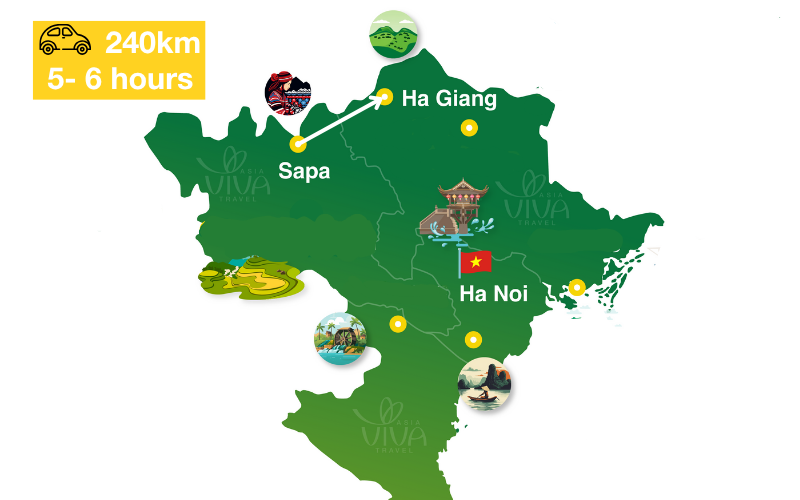
Map showing the location of Sapa and Ha Giang in Northern Vietnam
What makes both destinations particularly appealing is their strong connection to authentic local life. Visitors can take part in daily activities such as planting rice with local farmers, feeding livestock like buffaloes and horses, or joining traditional cooking sessions with ethnic families. These immersive moments provide a rare glimpse into a lifestyle rooted in manual labor, tradition, and harmony with nature.
For travelers who love nature, seek quiet escapes from urban life, and are eager to engage with the rhythms of rural Vietnam, Sapa in Vietnam and Hà Giang promise not only picturesque views but also unforgettable human connections. Even to have a more complete trip, tourists should use a package tour to be able to both experience and understand the culture and life in Ha Giang and Sapa in Vietnam.
>>>> Read more: Sapa in Vietnam tour
In Sapa in Vietnam, travelers can dedicate time to exploring local villages, trekking through scenic forest trails, or visiting some of the region’s most beautiful waterfalls. With its mountainous terrain, Sapa in Vietnam is home to a series of striking natural features. Among the most popular are Silver Waterfall (Thác Bạc), cascading down from a height of over 200 meters, and Love Waterfall (Thác Tình Yêu), nestled within Hoàng Liên National Park and surrounded by thick pine forests. These spots not only offer spectacular views but also serve as peaceful rest points along many trekking routes.
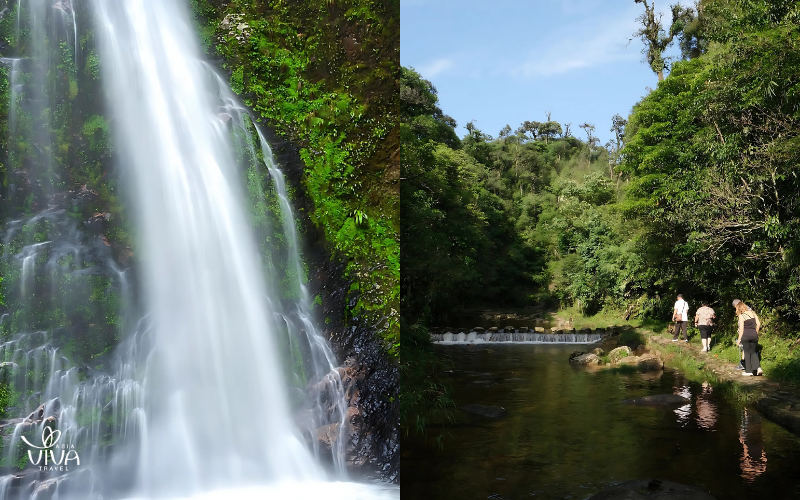
Love Waterfall, nestled deep in Hoang Lien National Park
Sapa in Vietnam tour is incomplete without exploring its ethnic minority villages such as Cát Cát, Tả Phìn, Lao Chải, or Tả Van. Each village offers something unique – from homemade corn wine to handwoven brocade scarves – all crafted with traditional techniques passed down for generations. While wandering through the villages, travelers are encouraged to support local artisans and farmers by purchasing their handmade goods, which are not only meaningful souvenirs but also vital sources of income for local communities. For breathtaking rice terraces, head straight to Lao Chải and Tả Van, they stand out as must-visit destinations for travelers seeking the most stunning rice terraces. Nestled in a lush valley, these villages offer panoramic views of layered golden fields during harvest season and deep cultural immersion year-round.
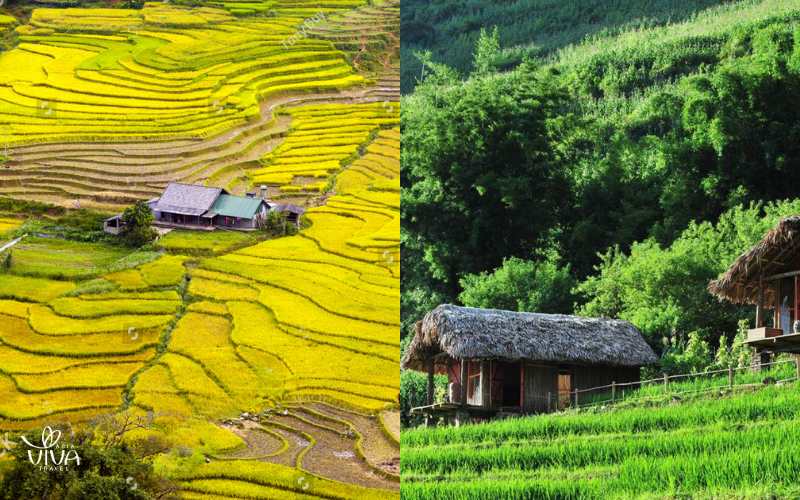
Golden rice terraces in Ta Van Village during the harvest season
In addition to sightseeing, travelers can engage in a variety of immersive experiences such as cooking classes with local hosts, learning to dye fabric using natural indigo, or even taking part in daily farm work like transplanting rice seedlings or feeding livestock. Herbal medicine, made from forest plants, is also sold in some villages and can be experienced through traditional herbal baths or as remedies used by ethnic communities for centuries.
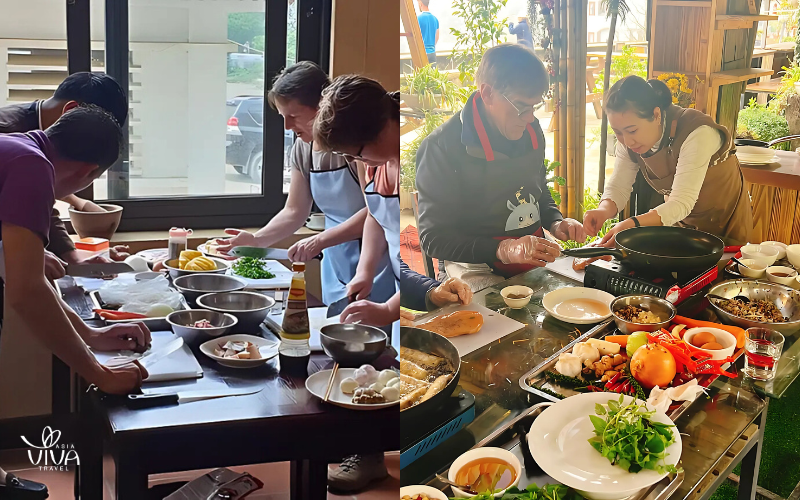
Joining a traditional cooking session with a local family in Sapa
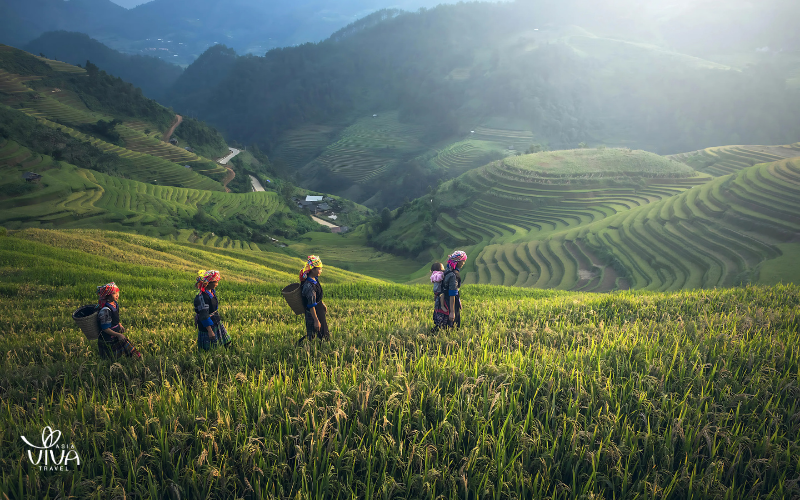
Local farmers tending to the rice fields — a daily rhythm of the highlands
Sapa in Vietnam is particularly famous for its stunning terraced rice fields, which turn a vibrant green in summer and a brilliant golden hue during the harvest season. The best time to visit is from September to late October, when travelers can witness the breathtaking scenery of ripening rice fields and enjoy the captivating experience of cloud hunting as morning fog rolls over the mountains.
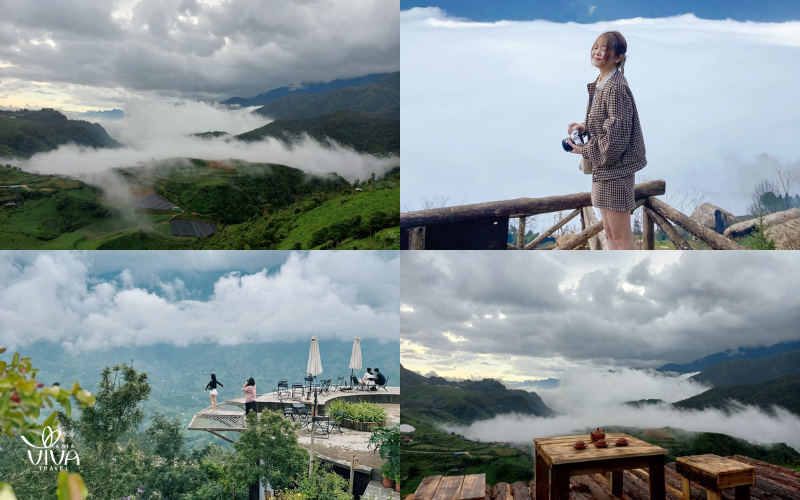
Cloud hunting in Sapa — a magical morning experience
Another ideal period to visit is from November to January, when the chill of winter settles over the highlands. During this season, travelers can witness a different side of Sapa in Vietnam – locals gather around wood-burning stoves for warmth, and some households prepare traditional smoked buffalo or pork, preserved over the hearth for the colder months. Joining in these communal moments offers an intimate glimpse into highland life and the warm hospitality that defines the region.
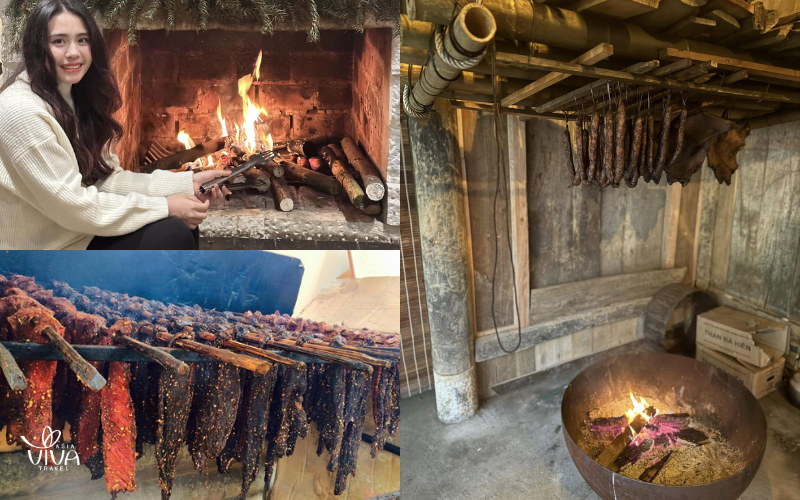
Highland life in winter_ warmth from the hearth, stories in the smoke
Both of these windows fall within the dry season, meaning the climate is cool, rainfall is minimal, and road conditions are relatively stable and safe for travel, whether by car or motorbike.
It is advisable to avoid visiting from May to August, as this is the rainy season. Heavy showers and occasional storms may lead to landslides in the mountainous terrain, posing risks and making travel more challenging. However, tourists do not need to worry if they travel during this time because some locations and routes can still be visited with our help – Asia Viva Travel will support and create a reasonable schedule for you to have a great trip in Sapa in Vietnam.
As for transportation, to optimize travel time, especially given that the journey from central Hanoi to Sapa in Vietnam takes over six hours by road, many travelers choose to depart in the evening. This allows them to arrive in Sapa in Vietnam early in the morning, feeling well-rested and ready to begin their day of exploration.
There are two popular transportation options to reach Sapa in Vietnam: sleeper train/ sleeper bus or limousine car. The sleeper train offers comfortable, flat beds where passengers can rest overnight. However, the train only goes as far as Lào Cai Station, which is located approximately 30 kilometers from Sapa in Vietnam. Upon arrival, travelers must transfer by car or bus to reach the town center, a journey of about 30 minutes.
Alternatively, limousine buses provide direct transportation from Hanoi to the center of Sapa in Vietnam. These vehicles are equipped with reclining massage seats for added comfort during the long ride. While the journey by limousine may be slightly shorter than by train, both options offer unique conveniences depending on traveler preference and schedule.
As another option, private cars offer greater flexibility for those who prioritize privacy, comfort, and a personalized schedule. This mode of transport is especially suitable for families, small groups, or travelers seeking a more exclusive experience. With the ability to make scenic stops along the way – such as at tea plantations or ethnic markets – a private car transforms the journey into part of the adventure itself.
With its convenient location and excellent transport connections, Sapa in Vietnam tour from Hanoi is always a smart way to begin your journey – where every mile from the capital leads you deeper into the poetic charm of Vietnam’s northern highlands.
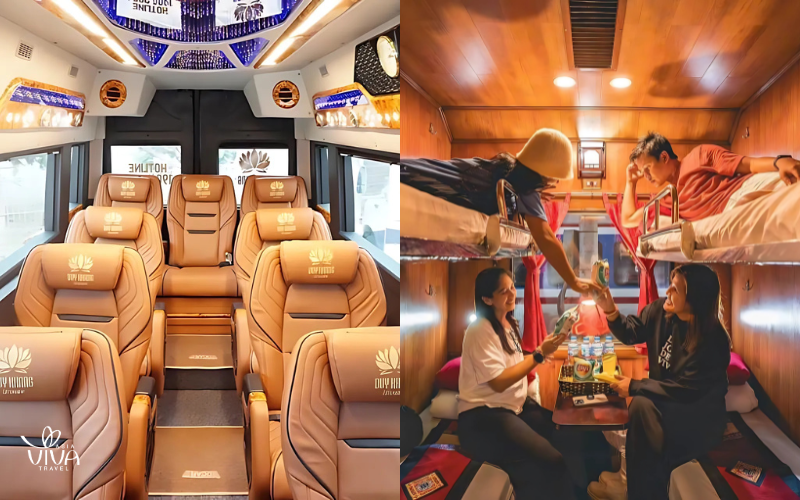
Travel Tips to Sapa
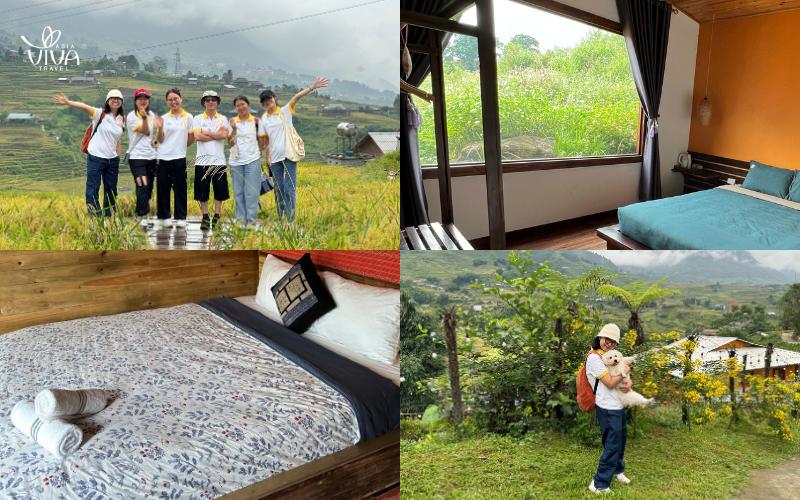
Stay close to nature in cozy mountain-view homestays
Travelers who prioritize convenience should stay near Sapa in Vietnam’s town center, where restaurants, cafes, and small grocery stores are concentrated. This area is also ideal for those planning to rent motorbikes, as Sapa in Vietnam currently has only one gas station located nearby.
For a more peaceful experience close to nature, staying on the outskirts is a great option. Accommodations here are mostly homestays nestled near mountains and ethnic villages, offering guests a chance to connect with local life and enjoy the natural surroundings.
For more informations:
>>> SAPA: THE BEST VALUE 3-STAR HOTELS
For evening activities, beside day, travelers can explore Sapa in Vietnam’s weekend walking street, where local specialties and souvenirs are sold. One unique cultural highlight is the Sapa in Vietnam Love Market, a traditional gathering of the H’mong people featuring music, dance, and handicrafts.
Visitors can also simply enjoy a stroll through the lively town center filled with street food and small cafés. It’s recommended to bring an umbrella or a warm jacket in the evening, as temperatures drop and mist can make the streets slippery, sturdy shoes are advised.
No trip to Hà Giang is complete without experiencing the Ha Giang Loop tour – an iconic route carved through dramatic mountain landscapes. One of its highlights is the Ma Pi Leng Pass, a 3-kilometer stretch of winding road built along steep cliffs with countless sharp bends.
Whether by car or motorbike, the journey offers breathtaking views from above, allowing travelers to fully embrace the wild beauty of Hà Giang through an exhilarating and unforgettable ride.
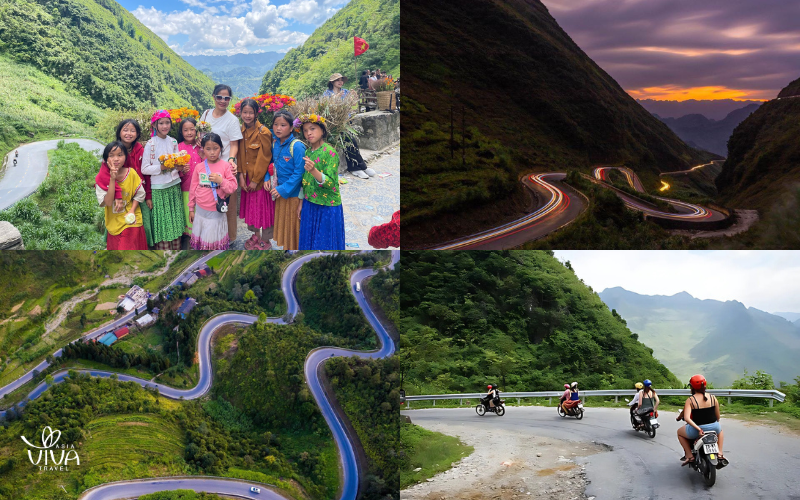
Ma Pi Leng Pass — where the mountains meet the clouds
Beyond its iconic mountain loop, Ha Giang loop tour offers an untamed, deeply authentic experience that few places can match. The journey isn’t just about riding steep winding roads – it’s about where those roads lead.
Along the way, travelers discover ancient villages like Pho Bang village, where time stands still, and Then Pa village, known for its peaceful setting and traditional stone houses surrounded by vegetable gardens and roaming livestock. Visitors can also explore the historic H’mong King’s Palace (Dinh Vua Mèo), a unique architectural gem nestled in Sa Phin Valley.
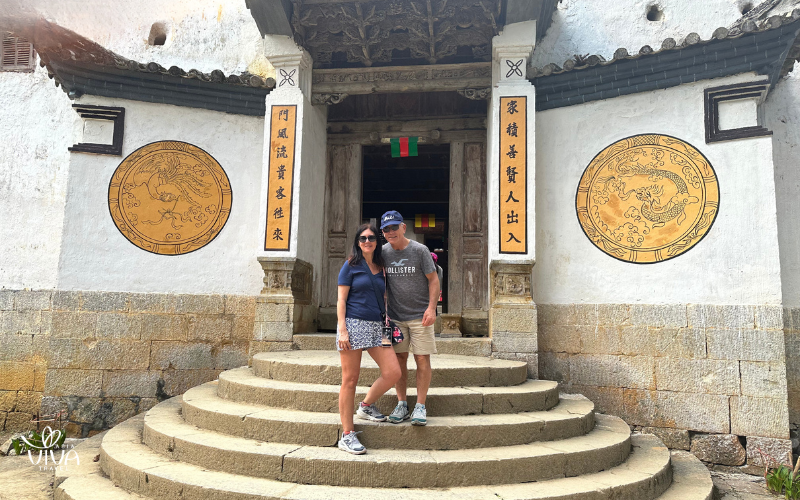
The H’mong King’s Palace_ a symbol of ethnic heritage in Ha Giang
For nature lovers, the emerald Nho Que River and the dramatic cliffs of Tu San Canyon offer unmatched views and boat trips through Vietnam’s deepest gorge- a true highlight for thrill-seekers.
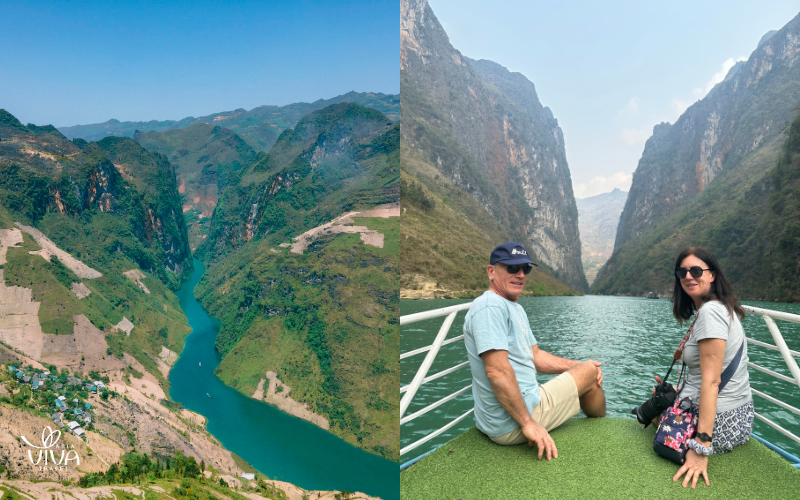
The emerald Nho Que River winding through Tu San Canyon
But the real adventure lies in connection: staying in homestays, sharing meals with Mông and Tày families, and learning about traditional farming, crafts, and daily life in the highlands. Hà Giang is not just a destination – it’s a bold, immersive escape into the cultural and natural heart of Vietnam.
Unlike Sapa in Vietnam, Hà Giang is not accessible by train, as there are currently no railway lines serving tourism in this region. The most convenient ways to travel from Hanoi to Hà Giang are by sleeper bus, private car, or limousine minivan, all of which typically take around six to seven hours.
Travelers should be aware that the route includes winding mountain roads, especially during the final stretch into Hà Giang City. Those prone to motion sickness are advised to prepare accordingly and choose evening departures to arrive well-rested in the early morning, ready for adventures.
To ensure maximum comfort and safety throughout the journey, Asia Viva Travel includes private car transportation as part of its Hà Giang tour packages. This allows travelers to enjoy a smooth, unrushed ride with scheduled scenic breaks and full control over their itinerary. With experienced local drivers familiar with the mountain terrain, as well as the added privacy and flexibility of a dedicated vehicle, the drive becomes more than just a transfer — it becomes a curated introduction to the Northern highlands.
While both Sapa in Vietnam and the Hà Giang Loop are located in Northern Vietnam and offer spectacular mountain scenery, they differ significantly in atmosphere, accessibility, and experience. Sapa in Vietnam is often considered the more accessible option, with its postcard-perfect rice terraces, rolling hills, and the iconic Mount Fansipan. It has long been a favorite among travelers for its moderate trekking trails, well-developed tourism infrastructure, and the ease of engaging with local ethnic groups such as the H’mong and Red Dao. Here, visitors can enjoy homestays, take part in guided village walks, and explore colorful markets – all within a relatively compact area.

Gentle treks through Sapa’s rolling hills and villages
Ha Giang, in contrast, is a true frontier for off-the-beaten-path travelers. Its famed Loop offers a much wilder and more dramatic landscape, with steep limestone mountains, dizzying passes like Ma Pi Leng, and remote ethnic villages where time seems to move slower. Cultural experiences here often feel more raw and intimate, especially when visiting communities like the Mong, Tay, or Lo Lo. However, the journey is also more challenging. Ha Giang is best suited for those who are physically prepared for long motorbike rides or rugged trekking, and who are eager to trade comfort for authenticity.
For trekking enthusiasts, Sapa in Vietnam provides a wide range of options suitable for all levels, while Ha Giang rewards experienced adventurers with jaw-dropping scenery and solitude. Photographers will find both regions captivating – Sapa in Vietnam charms with golden rice terraces in the harvest season, while Ha Giang offers surreal canyon views, misty mountains, and untouched highland life.
Ultimately, the choice depends on what kind of adventure you seek. But if time permits, visiting both Sapa in Vietnam and Ha Giang will offer the perfect contrast: one gives you a gentle, scenic introduction to Vietnam’s highlands, while the other challenges you with its rugged terrain and raw cultural beauty. Together, they paint a full picture of Northern Vietnam’s natural wonder and deep-rooted traditions – an unforgettable journey for any adventure-seeking traveler.
The best times to visit are late April to early May (watering season) and September to early November (harvest season). These periods offer vibrant scenery, cool weather, and ideal conditions for trekking, photography, or boating on the Nho Quế River.
Tourists should avoid traveling Sapa in Vietnam and Ha Gaing Loop from May to July, as this is the rainy season. Roads, especially in Hà Giang, can be dangerous due to landslides and poor visibility.
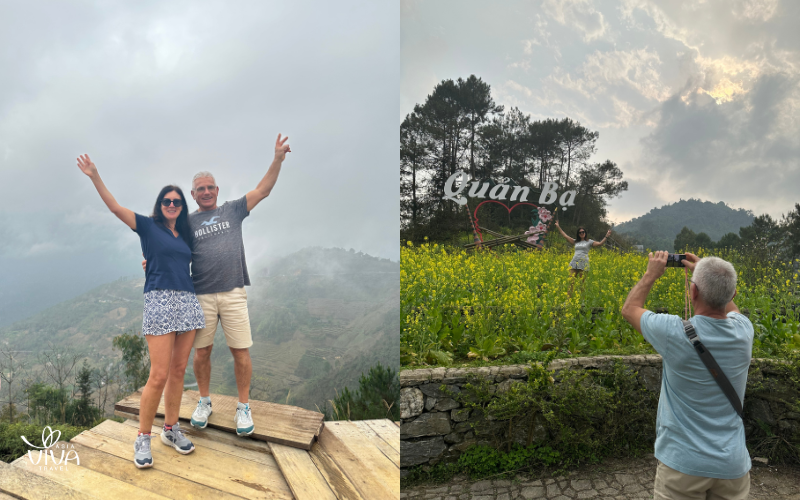
Northern Vietnam offers the perfect escape for adventure-hungry travelers
For travelers starting from Hanoi, a well-paced journey to both Sapa in Vietnam and Hà Giang ideally spans 7 to 10 days. While it may seem possible to cover these destinations in a shorter period, both regions deserve more than a rushed visit. Not only are the attractions spread across wide mountainous areas, but the travel time between Sapa in Vietnam and Hà Giang and from Hanoi to each -can take up to 6 – 8 hours per leg, depending on road conditions. A balanced itinerary allows visitors to enjoy not just the sights, but also the slower rhythm of highland life – from peaceful mornings in misty valleys to meaningful cultural encounters with ethnic communities. It also provides time for proper rest, which is especially important for travelers arriving from the U.S. who may need to adjust to jet lag and the physical demands of mountain travel.
To fully experience the best of Northern Vietnam without fatigue, it’s recommended to divide your journey thoughtfully: spend 3–4 days in Sapa in Vietnam for trekking, waterfalls, and cultural experiences, then 3–5 days in Hà Giang for the loop, canyon views, and highland adventure. Allow for a buffer day or two for travel, rest, or spontaneous detours – as sometimes the most memorable moments come from simply being present in the beauty of the mountains.
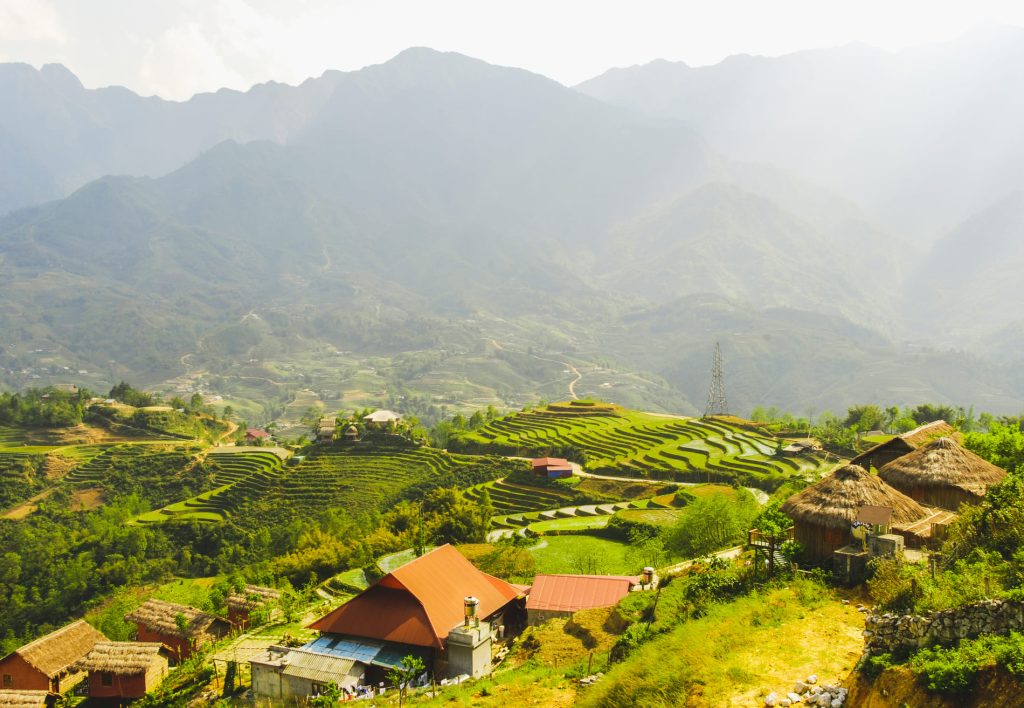
Discover-the-village-Y-Linh-Ho-in-Sapa-Vietnam
For US citizens planning to explore Northern Vietnam’s mountainous gems, securing a valid tourist visa is essential. Vietnam currently requires all US travelers to hold a visa upon entry, and depending on your itinerary – especially if it includes cross-border routes to neighboring countries like Laos – you should ensure your visa and other travel documents remain valid and compliant throughout the journey. It’s recommended to carry physical copies of your visa, as well as digital backups, and to double-check the entry requirements for each destination if traveling overland or by air between countries.

Visa requirements
While the general cost of living in rural areas may seem lower than in major cities, visitors should be prepared for occasional price variations. In regions like Sapa in Vietnam and Hà Giang, transportation costs and limited access to goods can cause prices – particularly for food, fuel, or logistics – to equal or even exceed urban rates. It’s advisable to prepare in advance, especially for Hà Giang, where options for shopping are limited to local grocery stores. Sapa in Vietnam has a supermarket and a broader range of services, making it the more convenient spot for stocking up before venturing further north.
Language can be a challenge in remote villages, where most ethnic minorities speak their native dialects and only basic Vietnamese. English is not widely spoken, especially among older generations. For smoother interactions, tourists are encouraged to travel with a local guide or use mobile translation apps. Out of respect for local customs and cultural sensitivity, Asia Viva Travel ensures that an experienced local guide accompanies each group. These guides help travelers navigate respectful interactions, such as advising against giving money or gifts directly to children — a common community practice aimed at preventing exploitation. They also assist in communicating with locals and encourage visitors to ask for permission before taking photographs in villages, fostering more meaningful and ethical exchanges. Many residents are happy to share their culture, but a respectful gesture can go a long way in fostering mutual understanding.
In terms of packing, be ready for shifting mountain weather: warm sunshine by day can quickly turn into mist and chill by night. Essential items include layered clothing, a good pair of anti-slip hiking shoes, mosquito repellent, and any personal medication.
ATMs are rare in Hà Giang and limited in Sapa in Vietnam, and card payments are generally not accepted. Travelers should bring enough Vietnamese Dong (VND) in cash, but avoid carrying excessive amounts for safety reasons.
Finally, staying connected is easy with a local SIM card. Viettel and Vinaphone are the two most reliable carriers for remote areas, offering stable 4G or even 5G coverage, depending on your SIM package. These cards are widely available in Hanoi and Sapa in Vietnam, and they provide solid service across most of the northern highlands, ensuring both convenience and peace of mind.

SIM locale
From the misty valleys of Sapa in Vietnam in Vietnam to the thrilling curves of the Ha Giang Loop, Northern Vietnam promises awe-inspiring adventures. Whether you’re eyeing a Sapa in Vietnam tour from Hanoi, a custom Ha Giang Loop tour, or a full Vietnam tour package, Asia Viva Travel is here to guide your journey.
Book your next escape with us – from things to do in Sapa in Vietnam to the epic BiBi Ha Giang Loop tour, let’s make your dream trip a reality.

 30/10/2025
30/10/2025Discover the best Vietnam tour packages from USA and enjoy a safe, unforgettable journey through Vietnam’s culture, beautiful nature, and rich history.

 23/10/2025
23/10/2025Exploring Son Doong cave – the world’s biggest natural cave with stunning formations, a hidden forest, and its own weather system that tourists have never seen.

 17/10/2025
17/10/2025Visit Da Nang with our detailed guide to the best hotels, resorts, Michelin-starred restaurants, and local street food for an unforgettable Vietnamese getaway.
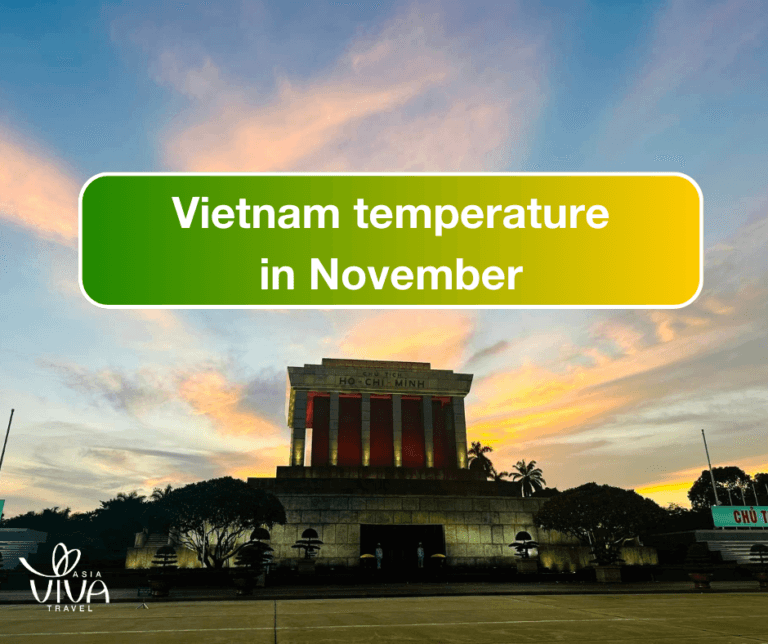
 08/10/2025
08/10/2025The temperature in Vietnam in November is average 26 degree celsius, being up to date for the temperature in Vietnam until 2024 to have the best trip.